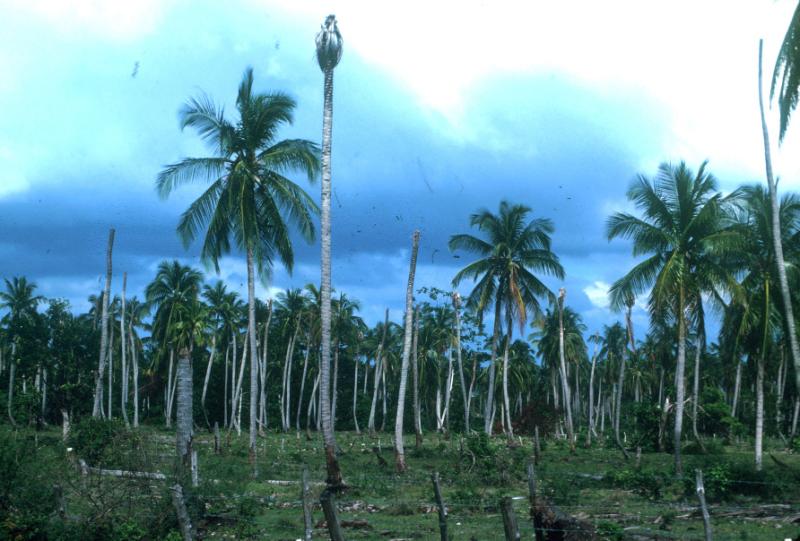
Malaysia
Ayuda de traducción - Aide de traduction - Assistenza di traduzione - Übersetzungsunterstützung
Last modified:
Contacts or sources of information -
Institute of Tropical
Agriculture, Universiti Putra Malaysia, 43400 Serdang, Selangor
DarulEhsan, Malaysia; or
Naghmeh
Occurrence
- Coconut palm (Cocos nucifera),
oil palm (Elaeis guineensis),
Bermudagrass (Cynodon dactylon)
and Madagascar periwinkle (Catharanthus
roseus) with symptoms indicative of
phytoplasma disease were collected from different locations in
Malaysia. PCR assays employing phytoplasma universal rRNA gene
primers P1/P7 alone or P1/P7 followed by R16F2n/R16R2 detected
phytoplasmas in eight out of 20 Malayan Red Dwarf (MRD), nine out of
12 Malayan Yellow Dwarf (MYD) and 12 out of 12 Malayan Tall (MT)
coconut palms displaying coconut yellow decline symptoms. Positive
detections were also obtained from six out of six oil palm seedlings
showing symptoms of yellowing and necrosis, from 10 out of 10
Bermudagrass samples with white leaf symptoms, and from eight out of
eight periwinkle plants showing phyllody, virescence, little leaf,
proliferation and foliar yellowing. Phytoplasmas were not detected in
any of the symptomless plants tested. Sequencing and phylogenetic
analysis of PCR products determined that phytoplasmas infecting both
MRD and MT coconuts and Bermudagrass in Serdang, Selangor State, were
all members of the 16SrXIV ‘Candidatus
Phytoplasma cynodontis’ group, whereas isolates in
periwinkle in Serdang were all members of the 16SrI ‘Ca.
Phytoplasma asteris’ group. However, the phytoplasmas
detected in MYD coconuts and oil palms from Banting, Selangor State,
and in periwinkle from Putrajaya were collectively very similar
(99%), but shared <97·5% similarity with 16S rDNA sequences of
all other known phytoplasmas, indicating that they represent a novel
taxonomic group. Thus, at least two phylogenetically distinct
phytoplasmas are associated with the coconut yellow decline syndrome
in Malaysia, both of which were also detected in other plant species.
Nejat, N., Sijam, K., Abdullah, S. N. A., Vadamalai, G. and Dickinson, M. (2009), Phytoplasmas associated with disease of coconut in Malaysia: phylogenetic groups and host plant species. Plant Pathology, 58: 1152–1160. doi: 10.1111/j.1365-3059.2009.02153.x
Spread -
Currently active areas -
Suspected new outbreaks -
Other palm/plant hosts - Not reported
New hosts, new vectors, new strains or suspected loss of resistance
Research projects - .
Rehabilitation/replanting programmes
Economic importance/threat -
This page is under continuous review. If you have an idea or an opinion to improve the contents of the page or the site, tell the editor. If you disagree with anything, say so. If you don't see or get a satisfactory response in a reasonable time contact other participants. At all time keep in contact with other individuals; this site is not a substitute for person to person contact.